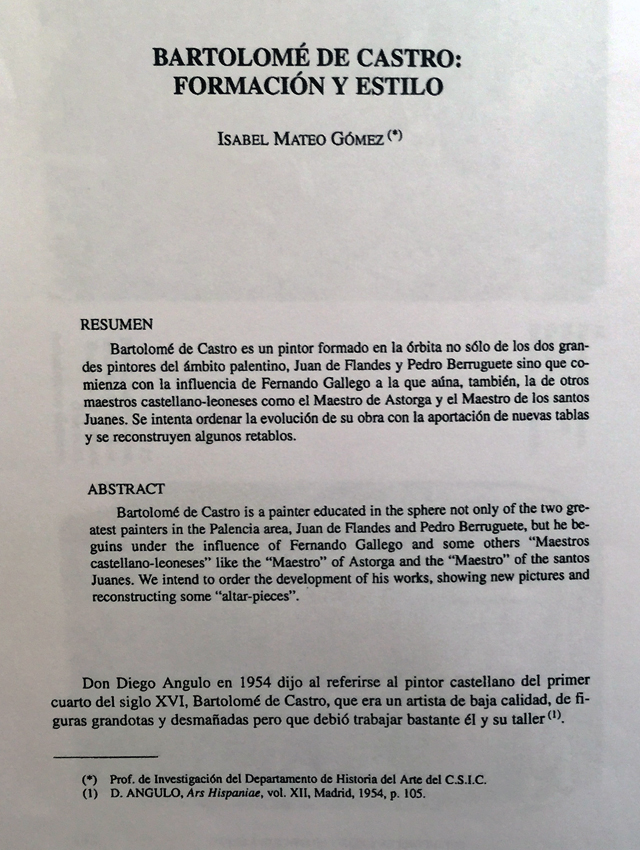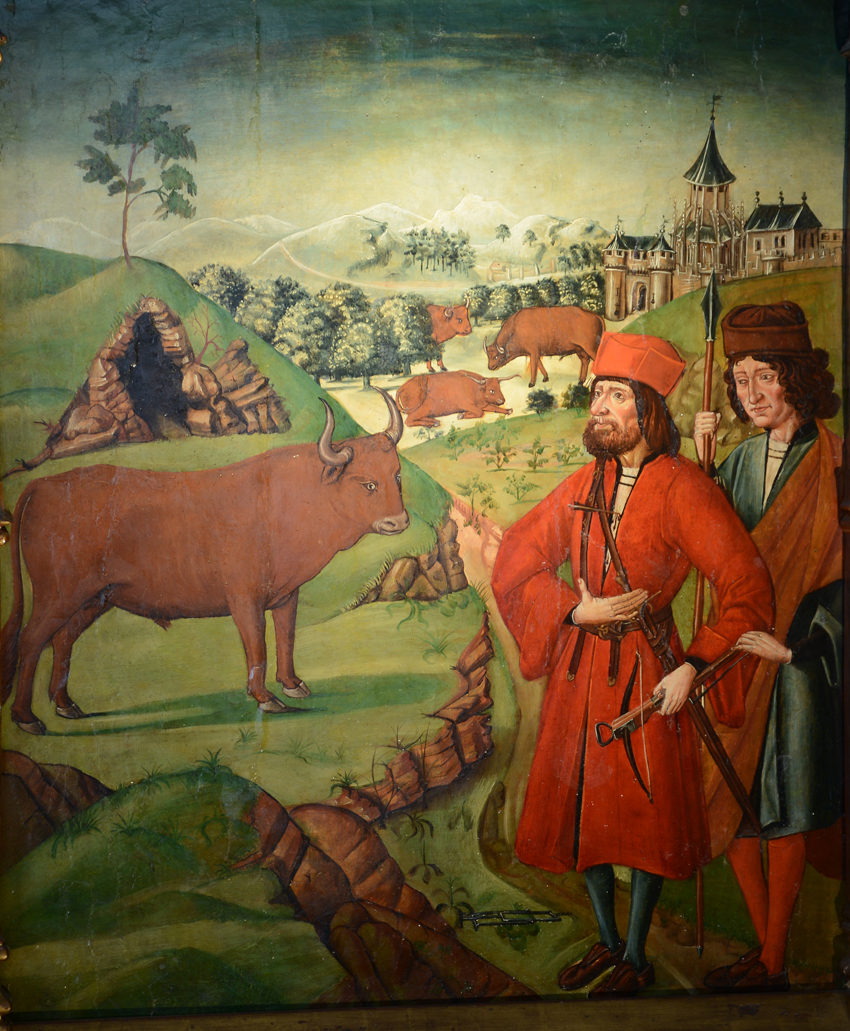No products
Prices are tax excluded
Detailed privacy of the user registry: Here
Legal notice and detailed cookies policy. By continuing to use the site, you accept our use of cookies: Find out more.
247.13
New
School of Burgos-related master of Ameyugo Scene Of the Miracle of the arrow that turns against Gágano instead of hurting the bull.
Circa: 1490-1510
Measures: 85 x 64,2 Cm. (Painted surface)
Oil on wood, in part, tempera on wood.
Warning: Last items in stock!
Availability date:

Altarpiece of the s: XV –XVI (BARTOLOMÉ DE CASTRO)
School of Burgos-related master of Ameyugo Scene Of the Miracle of the arrow that turns against Gágano instead of hurting the bull.
Circa: 1490-1510
Measures: 85 x 64,2 Cm. (Painted surface)
Oil on wood, in part, tempera on wood.
Recipient :
* Required fields
or Cancel
Bartolomé de Castro is a painter trained in the orbit of not only two great painters of scope palencia, Juan de Flandes and Pedro Berruguete; it begins with the influence of Fernando Gallego that combines, also, the two teachers castellanos-leoneses as the Master of Astorga and the Master of the Santos Juanes. It attempts to order the development of his work with the contribution of new tables and rebuild some altarpieces.


This scene, it belongs to an altarpiece dedicated to Archangel Michael, was transferred to canvas and in some points is observed still, in part, the weft of the fabric-probably in the last quarter of the NINETEENTH century, and in the summer autumn of 1985 has been set back on the wooden stand of pine in the grill slats, -Eleven horizontal glued to the table, and seven vertical hold-.
Carpentry-frame and canopy depth - is of pine wood, with good preparation of bol and golden top, well-placed and burnished with a stone of agate.
In the making of the painting, the author, on a scene with a positive perfectly delimited, not had to distinguish (as in other tables of the same altarpiece), the parties that had been working for the oil that was supposed to make to the temple, unifying the preparation of the table, scoring a drawing bluish to the human figures, animals, landscapes and architectures, with thick strokes and juxtaposed and crossed, in order to mark the main lines, in addition to volumes and to indicate from the base of the values that then had to have the color.
On the drawing blue that can be seen perfectly in the face of the server Gárgano and also in other parts of the same scene, the painter was spreading the colors, although, sometimes, the color does not follow the same lines as in the initial drawing. This latter fact is easily verifiable in the landscape of this composition: in this occasion not only are the differences point between the area defined by the drawing and which is occupied by the color, but the real changes, since the landscape is painted is different from the one that is noted first with the drawing.
The basic colors, pink, brown, green, red and orange, acquire different shades, precisely in function of the technique of the oil which allows it to pull the colour range and mix without forming an opaque (transparency of the initial drawing and modeling of the faces, dresses, sky...).
However the technique to oil painting, the painter applied it as if it were egg tempera, following the line flamenca, within which is this work. As we have mentioned above, this table formed part of an altarpiece dedicated to Archangel San Miguel, of which we know the existence of other compositions:
- Scene of the fight the archangel in San Miguel with the fallen angels.
- Scene of the bishop Siponte and the appearance of the archangel on Castel Sant Angelo, in addition to
- the predella with the figures of Christ a man of Sorrows, The Virgin and Saint John and other saints.
In this altarpiece the scene of the Miracle of the arrow that turns against Gárgano instead of hurting the bull occupied the bottom of the street left (from the spectator):


On the other hand, this work can be associated also with the paintings of the Master of Burgos, Alonso de Sedano, and with the works of his workshop and circle, for example, with the table of Christmas of Museo Diocesano of Burgos (from the old main altarpiece of the cathedral as well as the other tables of the Flagellation and the Crowning with thorns of the same altarpiece). In which the types of male can be considered to be precedents of our work. However, it is possible that the author of this scene has not directly derived from the Master of Burgos, but a follower right away or close as the so-called Master of Ameyugo (denomination in function of the altarpiece from the population). In this sense, the author of the scene of the Miracle of the Arrow... turns into a performer and simplifies the compositions, models, and drawing pictorial of the Master of Ameyugo, possibly, from some works such as the altarpiece of the saints Apollonia and Lucia, or in other works of the Diocesan Museum of Burgos (Tables of Christmas and epiphany), attributed to that master.
For all these reasons, and taking into account a greater closeness of typological with the school of Burgos's Teacher of Burgos and Master of Ameyugo above all, it is important to situate this work within this line, without forgetting the proximity of Palencia, and, not forgetting, of course, the difficulties of filiation direct regard to a painter, when it has not yet been structured with correction the paint castilian of the second half of the century: FIFTEENTH and early SIXTEENTH.
For the time being are unknown works by the same author.
Barcelona, march 7, 1987. Signed: Antoni José i Pitarch.
No customer reviews for the moment.